Written by Montira Narkvichien, Communications Specialist, WHO
15 July 2020
Samut Sakhon, Thailand – Many Burmese migrant workers returned to their country just before Thailand closed its borders as the number of cases of COVID-19 rose. But some 400,000 remained in Samut Sakhon province, keeping its seafood industry alive and keeping themselves free of the virus thanks to support from migrant health volunteers, strict health regulations, and a resilient community, public health officials said.
According to the International Federation of Red Cross and Red Crescent Societies, an estimated 80 million migrant workers in Asia are vulnerable to the pandemic, many of them unable to get help because they are undocumented and therefore largely invisible to authorities and humanitarian organizations.
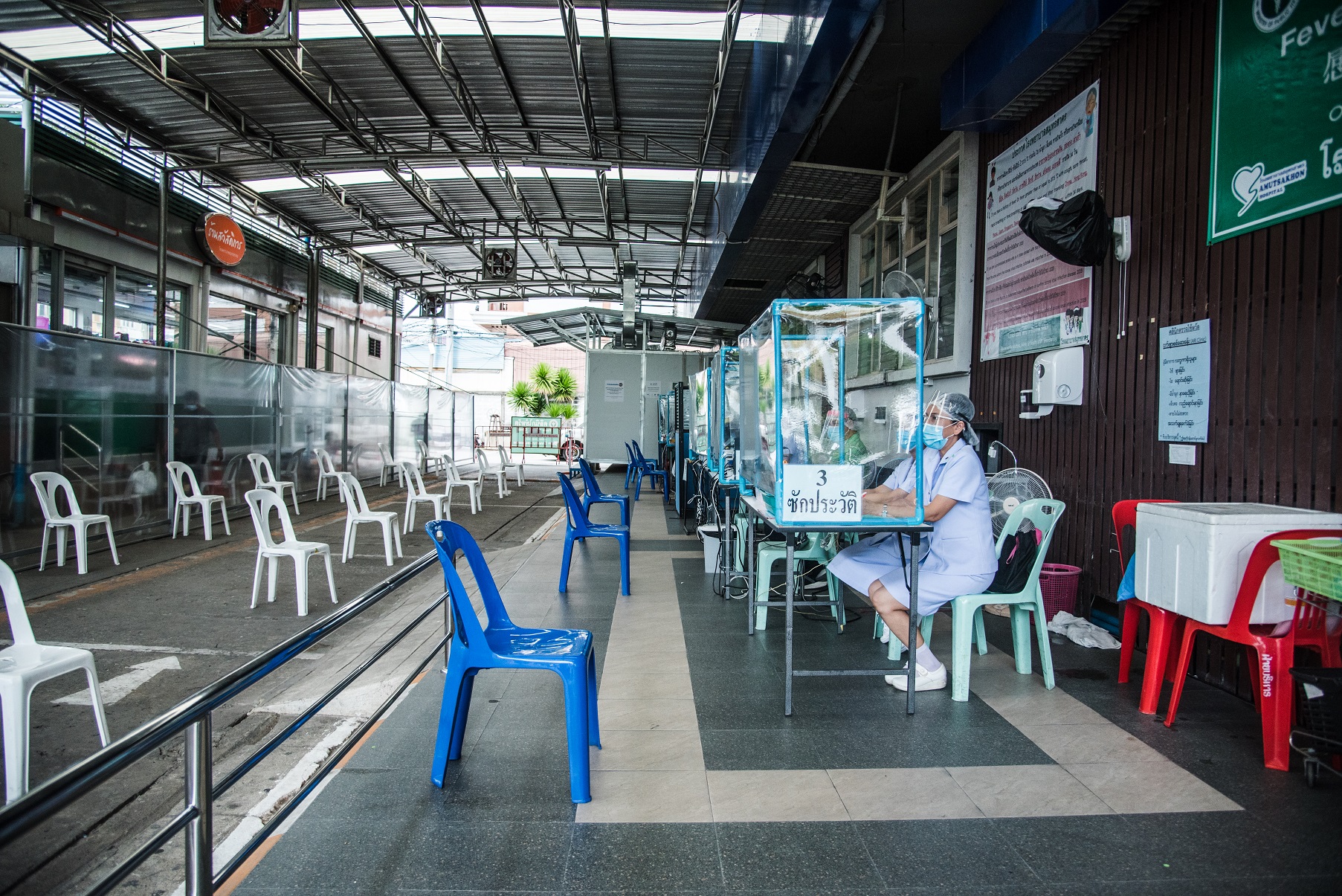
Nurses at COVID-19 Clinic, Sumut Sakhon Hospital, receives up to 20 patients, both Thais, and Burmese migrant workers. © WHO/Ploy Phutpheng – 2020
But in Samut Sakhon, “everyone has an equal access to COVID-19 treatment and support regardless of their legal status,” said Supoj Suakham, head of the Disease Control Department under the Public Health Office of Samut Sakhon Province, in an interview with the World Health Organization (WHO).
Samut Sakhon is on the Gulf of Thailand coast and a little over an hour’s drive southwest of Bangkok. It is home to the largest community of Burmese migrant workers in the country. The provincial health office says more than half this group are people without documents and they work in the fishing and seafood processing industry, which contributes about 3 per cent to the national GDP.
After declaring a state of emergency on 26 March, the Government introduced a curfew and partial lockdown, and closed the borders to attempt to halt the spread of COVID-19. In an appeal for attention to the issue, International Organization for Migration (IOM) said the flow of migrant workers returning home to Myanmar, Lao People’s Democratic Republic and Cambodia put pressure on front-line immigration officials and increased the risks of the disease spreading across the countries.
The IOM appeal said that migrants, irrespective of their legal status, are among some of the poorest people and have the least access to proper water and sanitation infrastructure -- reducing the effectiveness of infection prevention measures.
Many of the Burmese migrant workers visited by WHO in Samut Sakhon live in crowded dorms with no cleaning services in common areas and limited access to clean tap water.
To lessen public health risks and mitigate the impact to the local economy, Samut Sakhon’s Disease Control Committee chaired by the governor has passed 15 administrative orders since 18 March. These orders activated 24-hour surveillance systems; imposed strict health regulations such as temperature checks in all public areas; suspended all cultural and religious gatherings; and even imposed a fine of 20,000 baht (US$650) on anyone found not wearing a face mask in public.
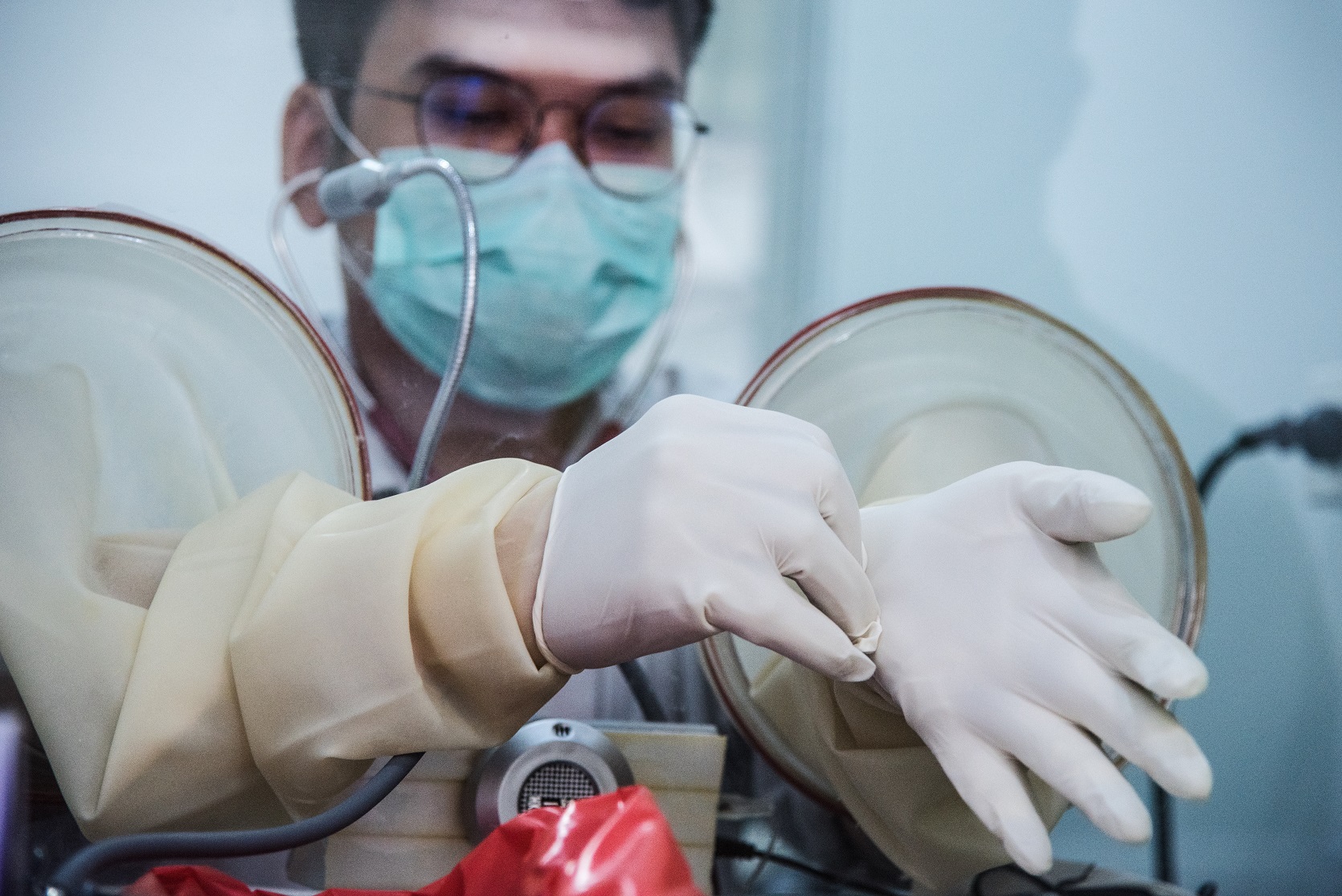
A doctor performs routine check on patients at COVID-19 Clinic, Samut Sakhon Hospital. © WHO/Ploy Phutpheng – 2020
A total of 18 COVID-19 cases have been reported in Samut Sakhon, and all the people have been treated and have recovered. All were Thais returning home from other provinces; no local transmission has been reported. Sentinel surveillance tests on 3,000 Burmese workers in Samut Sakhon all turned out negative.
The outcome of COVID-19 prevention measures in the province might have been different without the cooperation of the private sector. The authorities did not shut down the food processing factories as part of COVID-19 control measures.
“Fishing business operators were very cooperative in implementing health safety measures in their factories. Risky actions would cause a huge dent in their income otherwise,” Supoj said.
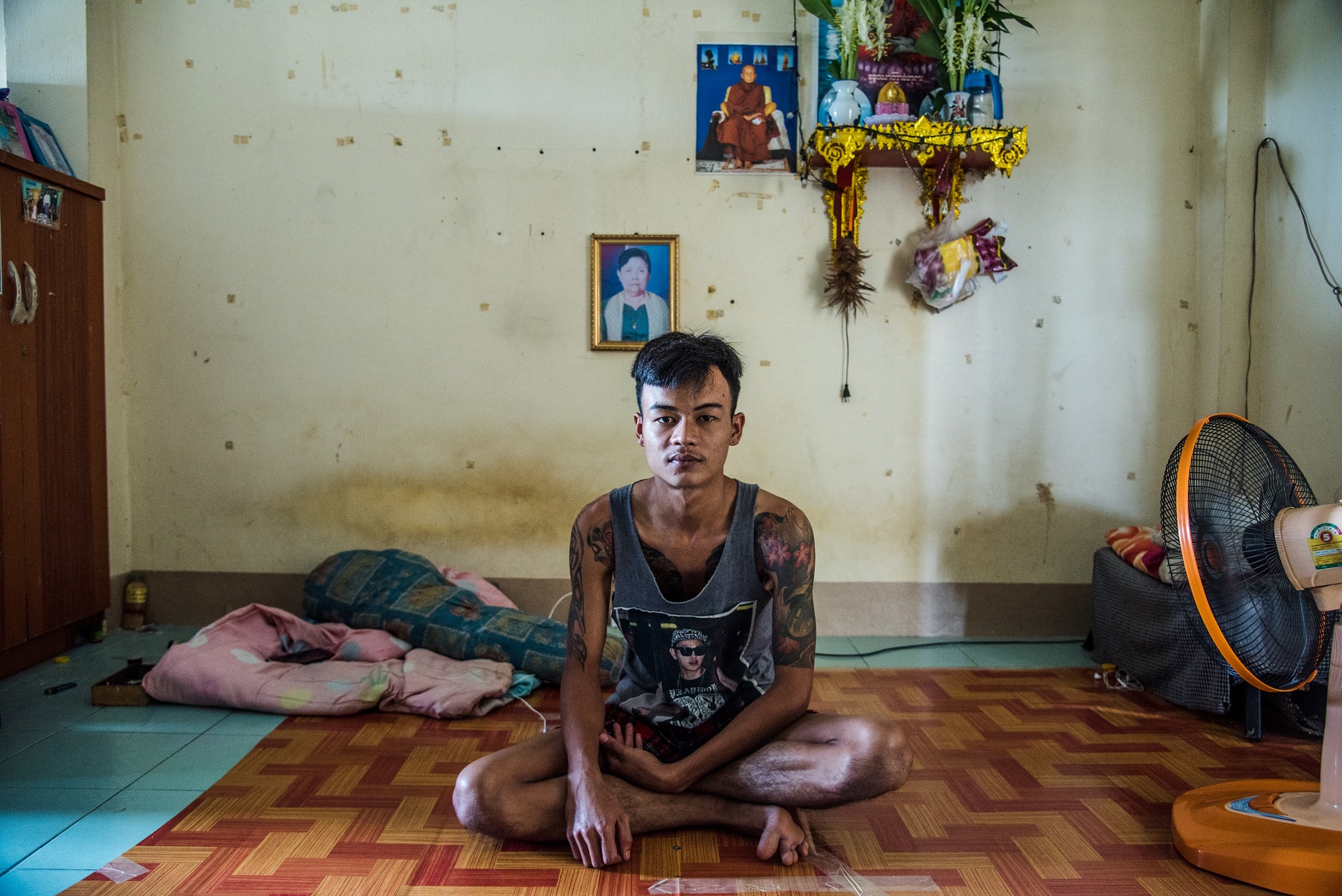
Wai Min Thu in his dorm in Samut Sakhon migrant worker's village camp. © WHO/Ploy Phutpheng – 2020
“We were asked to put on face masks, wash our hands, practice physical distancing when working in the plant,” said Wai Min Thu, 23, who came with his wife to work in Samut Sakhon four years ago from Dawei in eastern Myanmar.
“We are not too worried but at home we practice as recommended, such as … washing hands frequently, avoiding crowded places and no longer going to Sunday temple rites,” he said. “My wife goes to the market to buy food or runs errands only once a month. It had been every two weeks.”
Like most migrants from Myanmar, the young couple cannot read Thai and have limited understanding of English. They are often visited at home by Burmese migrant health volunteers. One of them is Lwin Lwin Kyi, who goes to check on them and other workers on weekends or on public holidays.
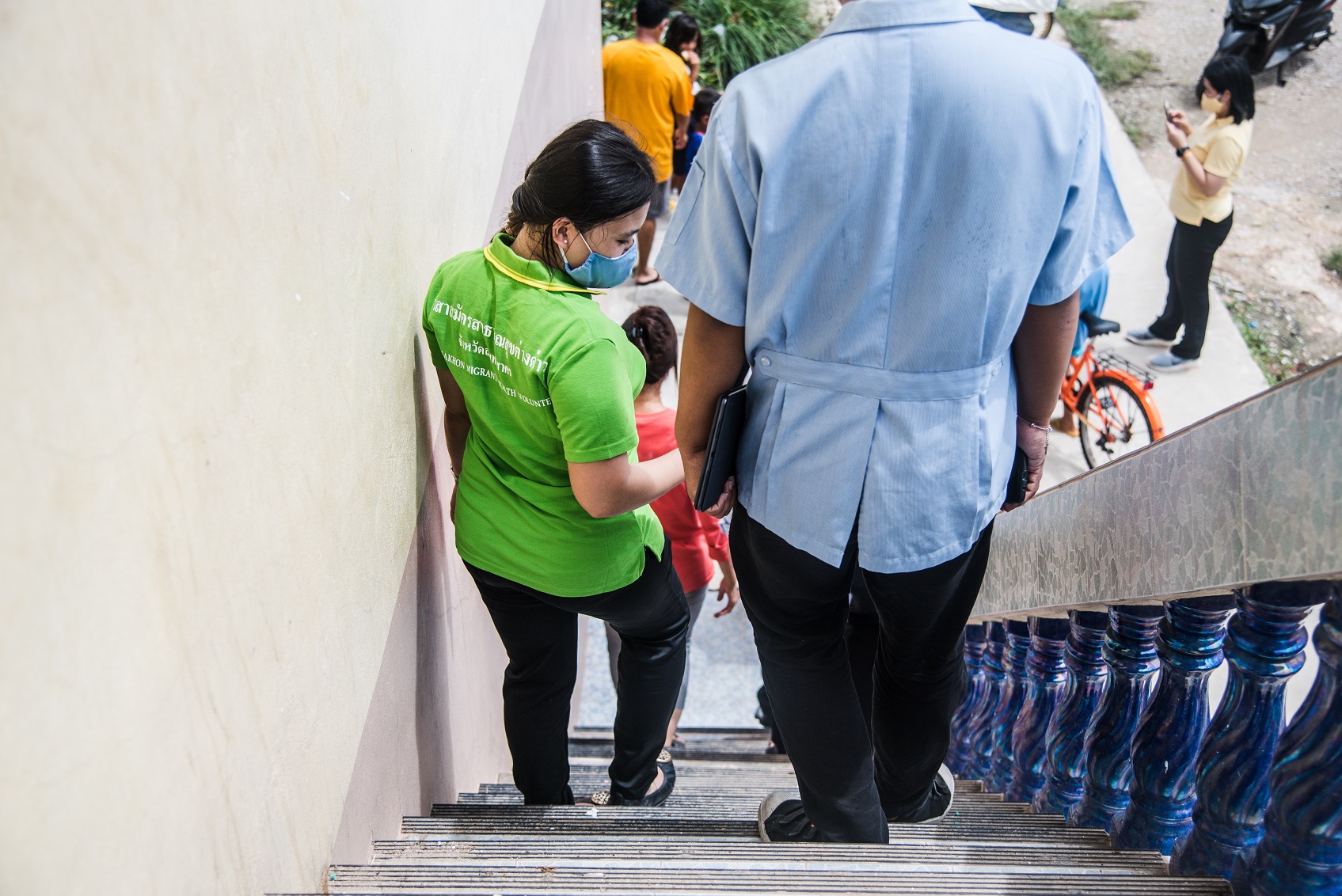
Lwin Lwin Kyi visits workers village camp. © WHO/Ploy Phutpheng – 2020
Lwin Lwin Kyi, 26, is part of Samut Sakhon Public Health Office’s network of about 300 trained Burmese volunteers who bridge the language gap when workers or their families fall ill. She often works at Samut Sakhon Hospital, where her Thai language ability comes in handy.
“The Burmese volunteers are very helpful, especially during the peak of the outbreak when we saw more workers here for COVID-19 screening,” said Kanitha Panraksa, 60, a nurse at the hospital who leads an outpatient ward that was set up to handle the outbreak.
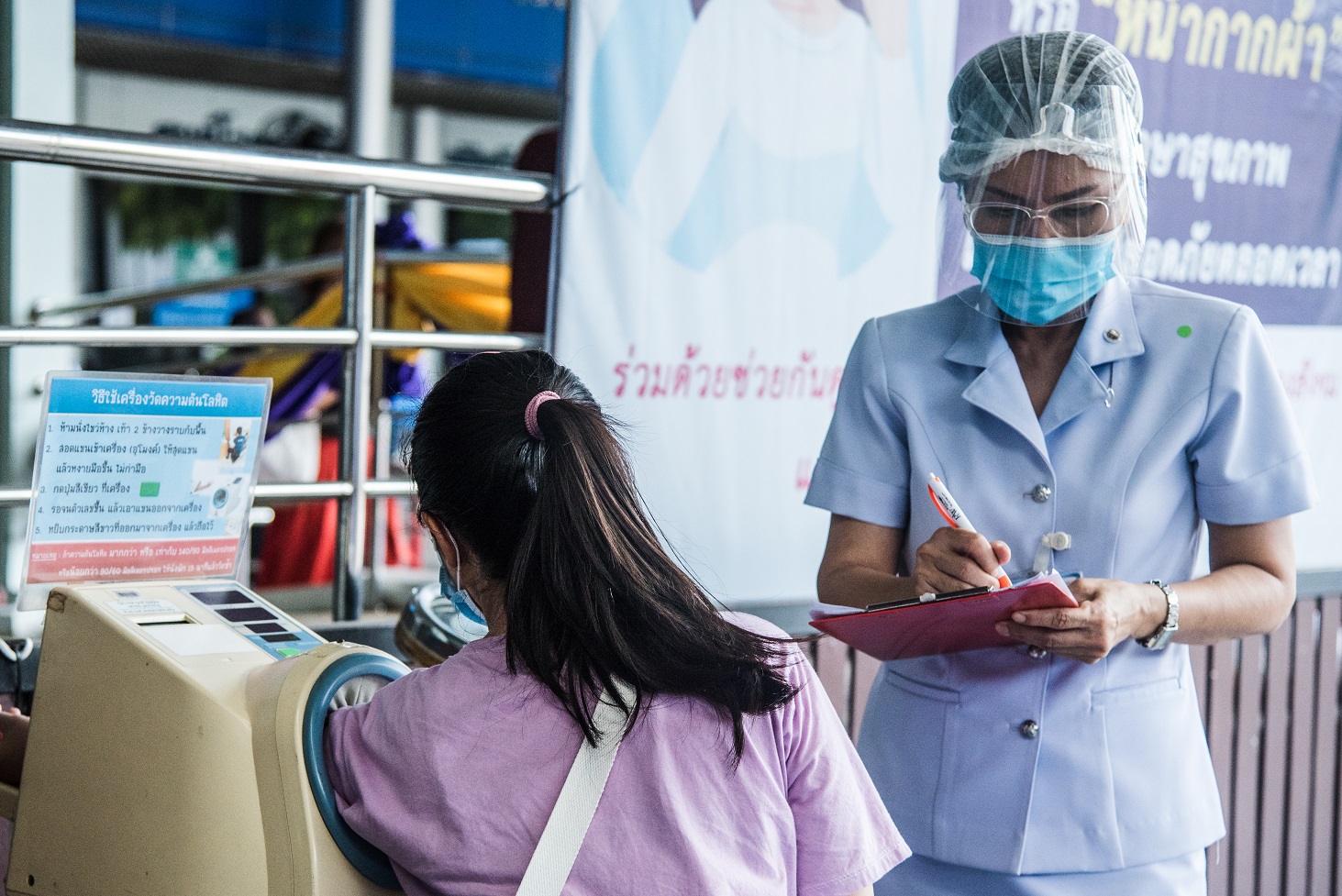
A nurse is filling a health check form at COVID-19 Clinic, Samut Sakhon Hospital, to identify the symptoms of the novel coronavirus. © WHO/Ploy Phutpheng – 2020
Each day the ward receives up to 20 patients, both Thais and Burmese, most of whom arrive with mild respiratory symptoms.
Over the past 10 years, the local health office has trained over 3,000 migrants to act as health volunteers in Samut Sakhon to help prevent, detect and report cases of suspected communicable and non-communicable diseases. But it’s difficult to maintain the programme’s capacity because migrant volunteers often move to other jobs or other parts of the country, said Supoj, the Disease Control Department head.
In May, the Ministry of Public Health’s Disease Control Department in collaboration with WHO, Raks Thai Foundation (a local NGO) and World Vision launched a helpline to support migrant workers from neighboring countries. More than 70 migrants and Thais who speak the migrant languages were trained to handle the hotline (1422), to assess callers’ needs and to transfer suspected COVID-19 cases to health professionals.
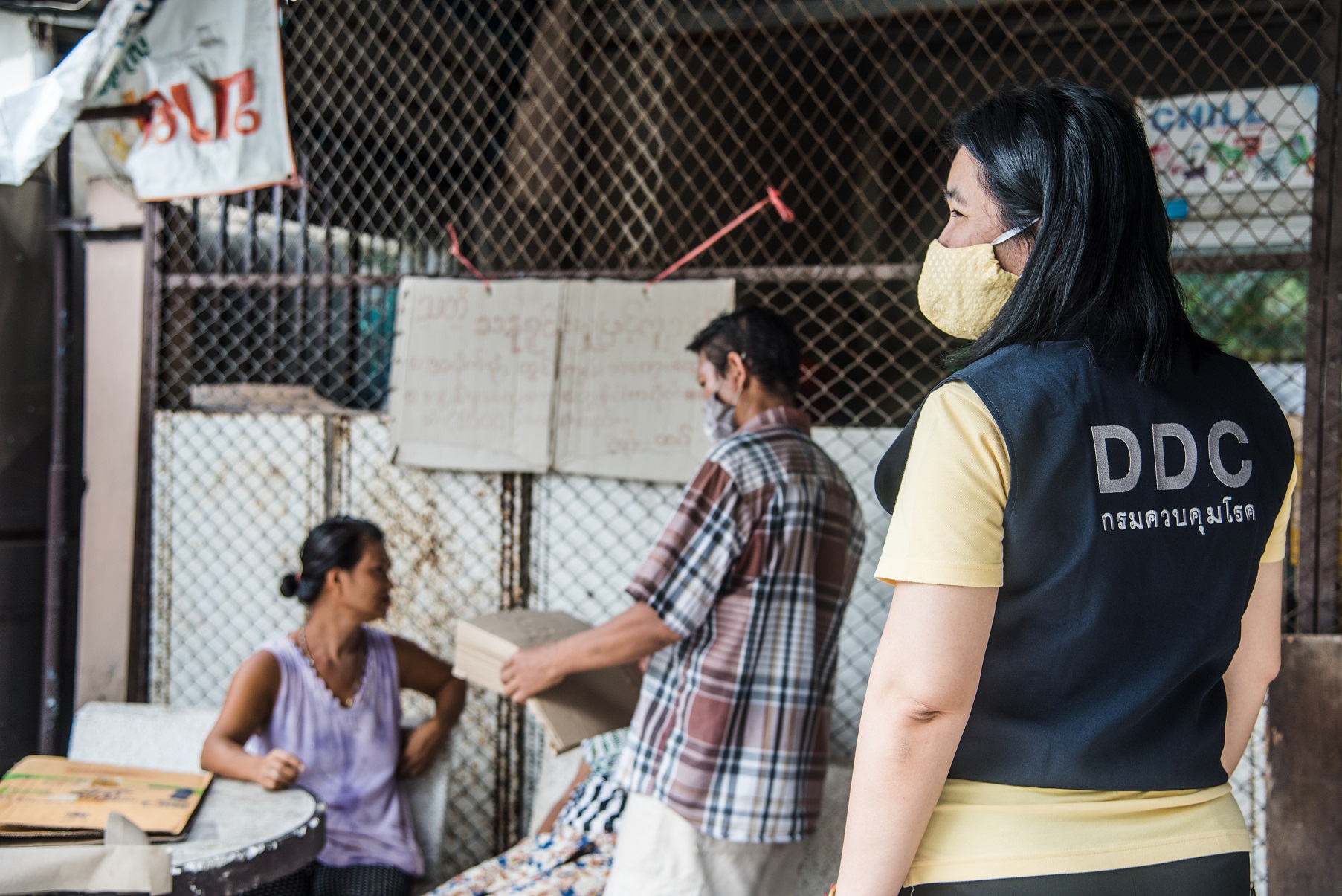
Department of Disease Control representative at Samut Sakhon migrant worker's village camp © WHO/Ploy Phutpheng – 2020
“The hotline information will help counter the fake news that drives negative psychological impacts on migrant workers such as hoarding food,” said Yemin, a Burmese hotline volunteer from Raks Thai Foundation.
Yemin, 35, said the information that the volunteers provide helps migrants in the seafood processing, garment, recycling, metal molding and furniture industries.
Another Burmese working the hotline, Zaw Zaw Latt, 40, said those seeking help range from 18 to 60 years old, and they were asking about COVID-19 instead of tuberculosis and HIV as in the past. Zaw Zaw Latt had responded to random phone calls from Myanmar workers during previous pandemics before the hotline was established.
“The hotline in Myanmar and ethnic Mon languages will empower us to reach migrants who do not usually have access to online information or news written in languages that they understand,” he said.
Wai Min Thu, the plant worker, said the coronavirus does not discriminate: “Everyone has an equal chance of getting it. Precautions are key.”
Daniel Kertesz, Richard Brown, Aree Moungsookjareoun and Pahurat Kongmuang Taisuwan contributed to this article.
Edited by Peter. J. Eng
Click here to see photo album.
If you have problem reading this article, please contact webmaster: sethawebmaster@who.int
